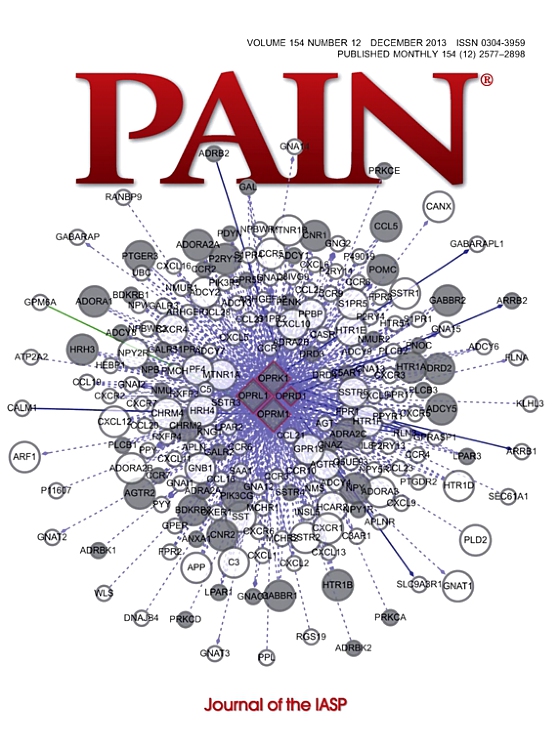Exploring the presence of long COVID-like symptoms in patients with chronic pain: a large-scale internet-based cross-sectional study in Japan.
IF 5.9
1区 医学
Q1 ANESTHESIOLOGY
引用次数: 0
Abstract
Individuals with chronic pain not only endure the direct burden of pain but also experience various symptoms, including sleep disturbances and fatigue, which deteriorate their quality of life. Notably, these symptoms closely resemble those observed in "long COVID," a prolonged health complication that can arise after coronavirus disease 2019 (COVID-19) infection. Because the similarities between chronic pain and long COVID remain unexplored, this study aimed to investigate their relationship using Japanese epidemiological data. Using the Japan COVID-19 and Society Internet Survey in 2022, which included 32,000 participants, we analyzed data on the presence of chronic pain, history of COVID-19 infection, and presence of 17 long COVID-like symptoms, including gastrointestinal upset, back pain, limb/joint pain, headache, chest pain, shortness of breath, dizziness, sleep disorder, hearing disorder, taste disorder, smell disorder, memory impairment, poor concentration, hair loss, decreased libido, fatigue, and cough. Individuals with history of COVID-19 experienced a significantly greater number of long COVID-like symptoms (median: 5) compared with those with neither COVID-19 nor chronic pain (median: 4, P < 0.001). Individuals with chronic pain alone and those with both COVID-19 and chronic pain exhibited an even greater number of symptoms (median: 8 and 9, respectively). In addition, individuals with chronic pain exhibited greater prevalence odds for 15 of the 17 symptoms than those with neither COVID-19 nor chronic pain (P < 0.001). Our findings indicate that long COVID-like symptoms are not specifically associated with COVID-19. Instead, the data suggest that chronic pain contributes as an independent risk factor for these symptoms.探索慢性疼痛患者是否存在长时间的冠状病毒样症状:日本一项基于互联网的大规模横断面研究。
慢性疼痛患者不仅承受着直接的疼痛负担,而且还会出现各种症状,包括睡眠障碍和疲劳,这些症状会降低他们的生活质量。值得注意的是,这些症状与“长冠状病毒”中观察到的症状非常相似,“长冠状病毒”是2019年冠状病毒病(COVID-19)感染后可能出现的长期健康并发症。由于慢性疼痛和长期COVID之间的相似性尚未得到探索,本研究旨在利用日本流行病学数据调查它们之间的关系。利用2022年日本COVID-19和社会互联网调查(包括32,000名参与者),我们分析了慢性疼痛、COVID-19感染史以及17种长时间COVID-19样症状的存在数据,包括胃肠不适、背痛、肢体/关节痛、头痛、胸痛、呼吸短促、头晕、睡眠障碍、听力障碍、味觉障碍、嗅觉障碍、记忆障碍、注意力不集中、脱发、性欲下降、疲劳和咳嗽。与既没有COVID-19也没有慢性疼痛的个体(中位数:4,P < 0.001)相比,有COVID-19病史的个体经历了更长时间的COVID-19样症状(中位数:5)。单独患有慢性疼痛的个体和同时患有COVID-19和慢性疼痛的个体表现出更多的症状(中位数分别为8和9)。此外,与既没有COVID-19也没有慢性疼痛的人相比,患有慢性疼痛的人在17种症状中的15种表现出更高的患病率(P < 0.001)。我们的研究结果表明,长时间的COVID-19样症状与COVID-19没有特异性关联。相反,数据表明慢性疼痛是这些症状的独立风险因素。
本文章由计算机程序翻译,如有差异,请以英文原文为准。
求助全文
约1分钟内获得全文
求助全文
来源期刊

PAIN®
医学-临床神经学
CiteScore
12.50
自引率
8.10%
发文量
242
审稿时长
9 months
期刊介绍:
PAIN® is the official publication of the International Association for the Study of Pain and publishes original research on the nature,mechanisms and treatment of pain.PAIN® provides a forum for the dissemination of research in the basic and clinical sciences of multidisciplinary interest.
 求助内容:
求助内容: 应助结果提醒方式:
应助结果提醒方式:


